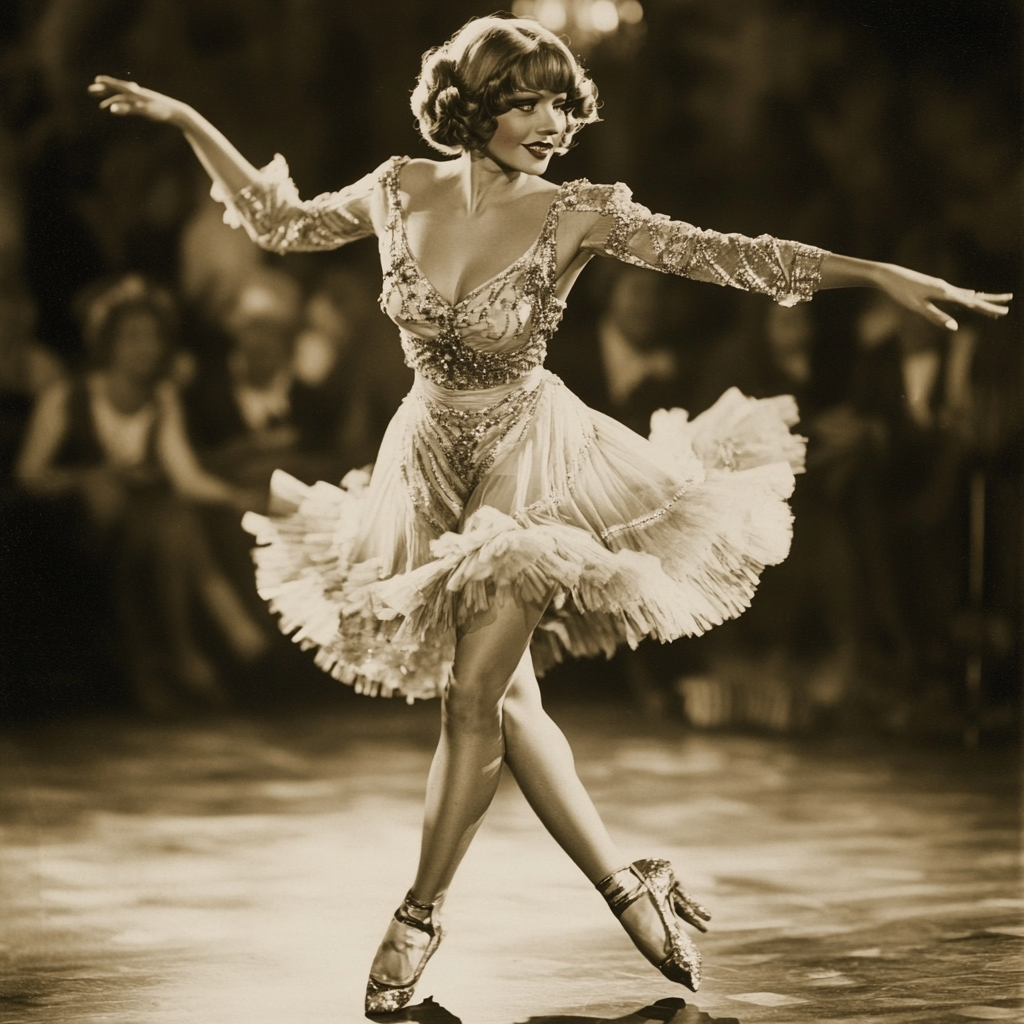From Paris to Broadway, cabaret has had a fascinating journey from small theatrical performances to a global cultural phenomenon. It arose at the end of the 19th century on the streets of Paris as a space for free expression of artists and quickly gained popularity due to its unique atmosphere, sharp satire and lightness of the format. But the path of cabaret was not limited to France – this genre of art has spread throughout the world, taking on new forms and challenges.
The origins of cabaret: Paris and Montmartre at the end of the 19th century
Cabaret originated in the hills of Montmartre, in one of the most bohemian quarters of Paris. At the end of the 19th century, Paris was the cultural capital of the world, and new forms of art were born in its theatres, cafes and clubs. Montmartre became a gathering place for artists, musicians and poets who were looking for new ways to express themselves. It was here, in 1889, that the legendary Moulin Rouge opened, becoming a symbol of cabaret and entertainment culture.
Cabaret offered a unique form of performance that intertwined music, dance, poetry and sharp satire. These performances differed from traditional theatrical productions in their ease, the possibility of improvisation and direct contact with the audience. Freedom of expression And provocativeness made cabaret a symbol of a new era when people were looking for fun and a challenge to social norms. Montmartre quickly became a place of pilgrimage for those who craved something fresh and unusual.
Cabaret and Burlesque in America: The Influence of European Style on Broadway
When the cabaret crossed the Atlantic, it met a completely different audience. At the beginning of the 20th century, the American theater scene was focused on grand shows and productions, but cabaret found its place thanks to burlesque, a lighter and more entertaining genre that gained popularity in the United States. Cabaret adapted to new realities, adding elements of pop and entertainment numbers. An example of this are the following changes:
- Use of comedy sketches combined with musical numbers.
- Emphasis on female sexuality through the performances of the dancers and their costumes.
- Turning cabaret into more interactive and mass entertainment aimed at a wide audience.
- The spread of burlesque as a form of cabaret in New York and Chicago.
- Influence of African American culture to music and rhythm, which gave cabaret in the USA a unique flavor.
These changes allowed cabaret to seamlessly enter American entertainment culture and pave the way to Broadway, where the genre continued to develop and influence other stage art forms.
Cabaret in Germany: Weimar Republic and Berlin Stage
Weimar Germany at the beginning of the 20th century was another important milestone in the history of cabaret. The Berlin scene at the time was a place where art mixed with politics and social movements. Cabaret played a special role here: it not only entertained, but also served as a way to express political satire, discuss pressing social issues and criticize governments.
The Berlin cabaret was famous for its intellectual approach to art. It was not afraid to ridicule power, discuss current issues and challenge established norms. Artists used the stage as a platform to express anarchist ideas and individual freedom, and this attracted both ordinary citizens and members of the cultural elite. During the Weimar Republic, cabaret became a symbol of freedom of thought and creative expression, but with the Nazis coming to power it was subject to repression. Many artists emigrated, and those who remained were forced to hide or work underground.
Revival and new wave: Cabaret in the post-war years and the 60s
After World War II, cabaret experienced a revival, but its form changed significantly. The genre returned to the stages of Paris, London and New York, but now it was more commercial and aimed at a mass audience. Post-war cabarets became not only a place of entertainment, but also a platform for experimenting with new formats. The revival of cabaret was associated with new musical genres such as jazz and rock and roll, which had a strong influence on the scene.
In the 1960s, cabaret again gained political relevance, especially in Europe. Artists used cabarets to criticize existing regimes and discuss issues of freedom, equality and human rights. At the same time, the commercial part of the cabaret grew: the shows became brighter, the dancing more dynamic, and the costumes more extravagant. These changes led to the creation of new show formats that were in demand around the world.
Modern forms of cabaret: From avant-garde to pop culture
Today, cabaret continues to exist in various forms, adapting to modern realities. One of the most noticeable trends has been the development of neo-cabaret, which uses elements of the classical genre, but with the addition of modern art, technology and new media. Such shows may include multimedia installations, acrobatic stunts and even circus elements. Cabaret is now something more than just musical and dance numbers – it is a whole performance that combines various types of art.
Many elements of cabaret have also been integrated into popular culture. Famous musicians such as Madonna and Lady Gaga have been inspired by cabaret for their stage looks and shows. Cabaret remains relevant, attracting new audiences with its extravagance, sensuality and provocation. Its scenes can be found not only in Europe and America, but also in Asian countries, where the genre is also gaining its popularity.
Cabaret has come a long way from modest Parisian cafes to large-scale shows on world stages. It has always remained at the center of cultural and social change, unafraid to challenge society and entertain audiences in new and unexpected ways. The evolution of cabaret demonstrates how art can adapt to changing times and remain relevant while remaining true to its roots.
Cabaret has adapted to the cultural and social characteristics of each country. In the USA it was transformed into burlesque and variety shows, in Germany it became a symbol of political satire, and in France it remained a place of freedom of expression. This variety of forms has made cabaret accessible and popular on different continents.
Contemporary shows often include cabaret elements such as sensuality, provocation and direct contact with the audience. Neo-cabaret combines classical dance, music and contemporary art, creating vibrant, multimedia performances that attract both fans of the traditional genre and youth audiences.

